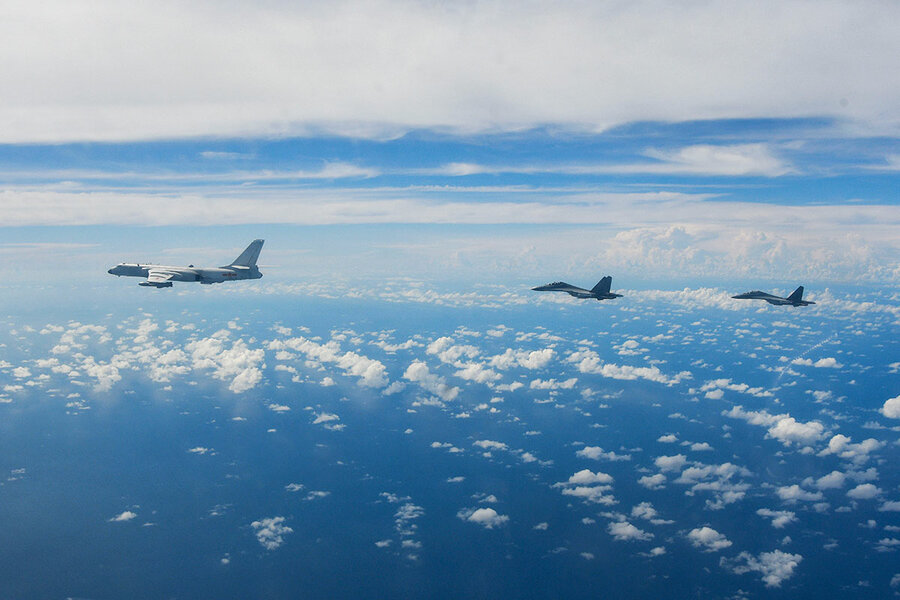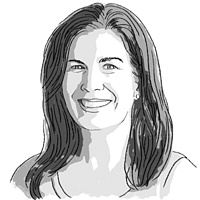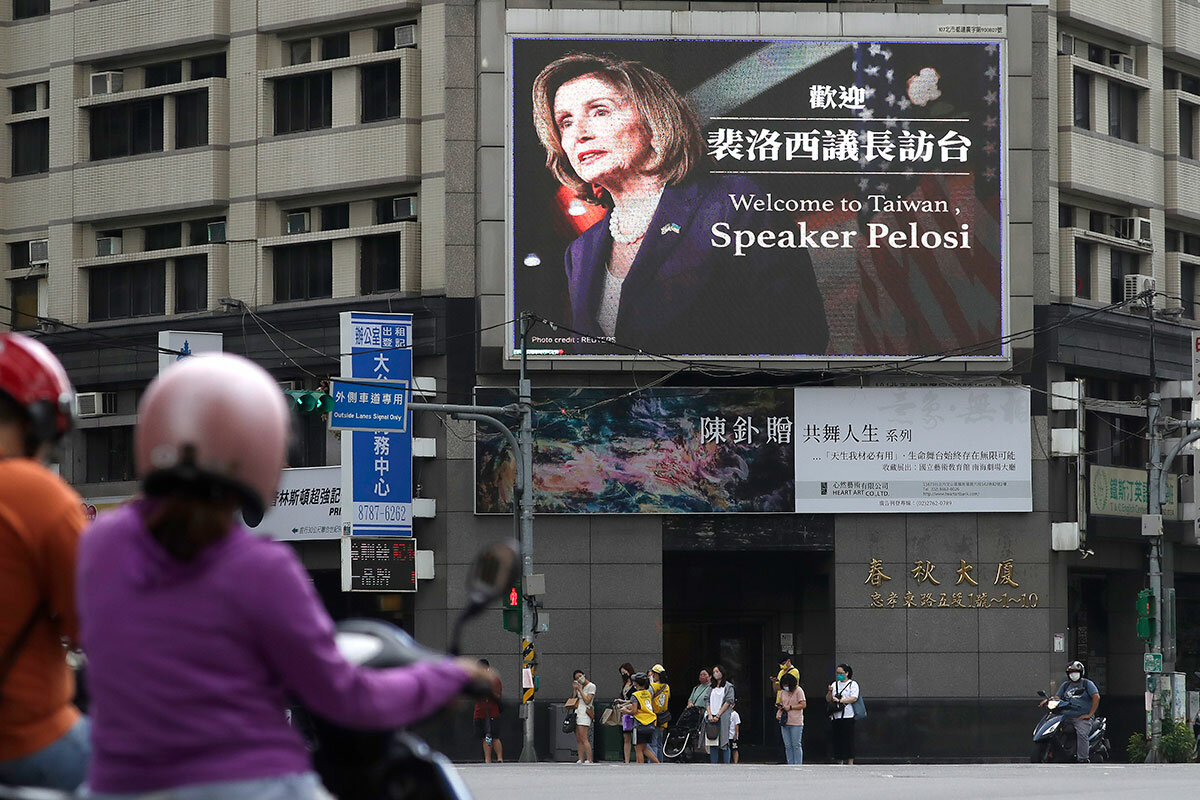What China is – and isn’t – learning from military drills near Taiwan
Loading...
China waged live-fire military exercises close to Taiwan this month aimed at punishing the self-ruled island – which Beijing claims as its territory – for perceived steps toward independence.
As the People’s Liberation Army mobilized hundreds of aircraft and dozens of warships in joint maneuvers Aug. 2-10, flexing a military that has expanded massively and steadily stepped up actions near Taiwan in recent years, experts in Washington and Taipei worry that they are rehearsals for a possible PLA invasion – an option Beijing has not ruled out should peaceful reunification fail or take too long. The drills marked a show of force in retaliation for a visit by U.S. House Speaker Nancy Pelosi, and could signal a new, threatening phase for the island, Asia’s most dangerous flashpoint, experts say.
Beijing also issued a new white paper this month on Taiwan – the third since 2000 – in which it withdrew an earlier commitment not to deploy troops or base administrative personnel in Taiwan after reunification.
Why We Wrote This
A story focused onPreserving peace sometimes means having cleareyed assessments of the potential for war. An uptick in Chinese military exercises in the Taiwan Strait has some reexamining the island’s defenses.
As the United States and Taiwan plan their next moves, experts say preserving the peace will require cleareyed and carefully calibrated actions to counter PLA advances without further escalating tensions in the Taiwan Strait.
“The stakes are enormous,” says Lyle Goldstein, director of Asia engagement at Defense Priorities, a think tank advocating both U.S. military strength and restraint.
Confidence-building exercises
For the first time, China launched missiles over Taiwan to target areas in the waters east of the island – demonstrating a capability that could complicate Taiwan’s defenses, experts say.
“One of the big questions is, can they hit ships at sea on the eastern side of Taiwan?” says Dr. Goldstein, also a visiting professor of international affairs at Brown University. “That area arguably is one of the most critical parts of the campaign because if the U.S. was going to flow forces or resupply or maintain any support for Taiwan … the American fleet would be on eastern side.”
China also practiced launching salvos of long-range rockets into the Taiwan Strait, which is concerning because they are cheaper and can be used in large numbers. “I view that as a game changer,” he said. “Once China fields that system in numbers, it would be very hard for Taiwan to hold out under the severe barrage those rocket artillery systems entail.”
Meanwhile, the drills allowed the PLA to train near Taiwan using joint operations that coordinate action by naval, air, and ground forces, and to test its command capabilities. The exercises improved the armed forces’ “integrated combat ability” and readiness, said Senior Col. Shi Yi, a spokesperson for the PLA’s Eastern Theater Command, according to the official Xinhua News Agency.
PLA authorities say they intend to “normalize” such military exercises around Taiwan, which experts say could offer several benefits in preparing for war.
Practicing multi-service or “joint” operations is critical to build the PLA’s confidence in a Taiwan contingency, says Oriana Skylar Mastro, a fellow at Stanford University’s Freeman Spogli Institute for International Studies and the American Enterprise Institute.
The latest exercises prove the PLA can mobilize a significant military force near Taiwan, she says. “Previously you might see two different aircraft operate and now you saw 100, that’s very impressive,” she says. But the degree of synchronization between China’s air, naval, and missile units was difficult to gauge. “That synchronization and communication between the air and amphibious element is what would be necessary” for a successful joint operation, she says.
More frequent deployment of ships and aircraft near Taiwan could also help the PLA gain an element of surprise in initiating an actual attack on the island, buying time before the arrival of U.S. forces.
“China can now decide whether a future exercise will be seamlessly turned into actual combat,” wrote Chen Feng, a commentator for the nationalist Chinese website Guancha.
Regular PLA operations could also wear down Taiwan’s defense forces by placing them on more frequent alerts, raising fuel costs and putting more stress on pilots and aircraft.
Still, experts say there are limits to what the PLA can learn from drills in which they face no real opponent.
“There’s always an element of uncertainty about whether or not they can conduct those operations when the war breaks out,” says Dr. Mastro. China has not fought a war since a border clash with Vietnam in 1979.
Another uncertainty is how much difficulty Taiwan’s limited beaches, rugged geography, and popular resistance would pose to invading forces. “The PLA is preparing. Are they ready is another question,” says Drew Thompson, former director for China, Taiwan, and Mongolia at the Pentagon.
Limitations and restraint
While some military analysts believe China has the capabilities it needs to retake Taiwan by force, others disagree.
“An amphibious invasion of Taiwan is probably one of the most complex military operations since World War II,” says Mr. Thompson, now a visiting senior research fellow at the Lee Kuan Yew School of Public Policy at the National University of Singapore.
“The Strait is fairly large … the seas are treacherous, the weather window for an invasion is fairly short, and the terrain in Taiwan itself is forbidding,” he says. “The PLA knows what a daunting military challenge it would be to invade Taiwan.”
China’s more threatening military actions may be backfiring in Taiwan, bolstering a spirit of resistance rather than intimidating the island’s people.
“No threat of any kind can shake the Taiwanese people’s resolve to defend their nation – not in the past, not now, and not in the future,” Taiwan’s President Tsai Ing-wen told a visiting American delegation in Taipei on Tuesday.
In recent years, public opinion on Taiwan has cooled to the idea of reunification with China, polls show. Beijing’s call for incorporating Taiwan under the “one country, two systems” formula it used in Hong Kong has lost its appeal to many people in Taiwan, especially since China’s crackdown on free speech, assembly, and independent media in Hong Kong.
Meanwhile, Taiwan and the U.S. have shown encouraging restraint in response to China’s military exercises, experts say.
“The United States and Taiwan responded appropriately. There was no reason to escalate things,” says Dr. Mastro. “The United States military has the option to also increase military activity. Everyone knows that,” she says. “The Pelosi visit gave China a pretext to do this exercise, and enhance their readiness, and I think the goal was not to give them even more excuses to do things.”
Going forward, the U.S. Navy will continue to transit the Taiwan Strait and conduct freedom of navigation operations in the region, the Pentagon said.
“Our forces in the region will continue to operate, to fly, to sail wherever international waters allows. That includes the Taiwan Strait,” Colin Kahl, undersecretary of defense for policy, told a Pentagon briefing this month.
Experts say that, for its part, Taiwan needs to spend more on its own defense, balancing conventional forces needed to deter a Chinese invasion with small, maneuverable forces able to survive an onslaught and defend the island in the longer term.







